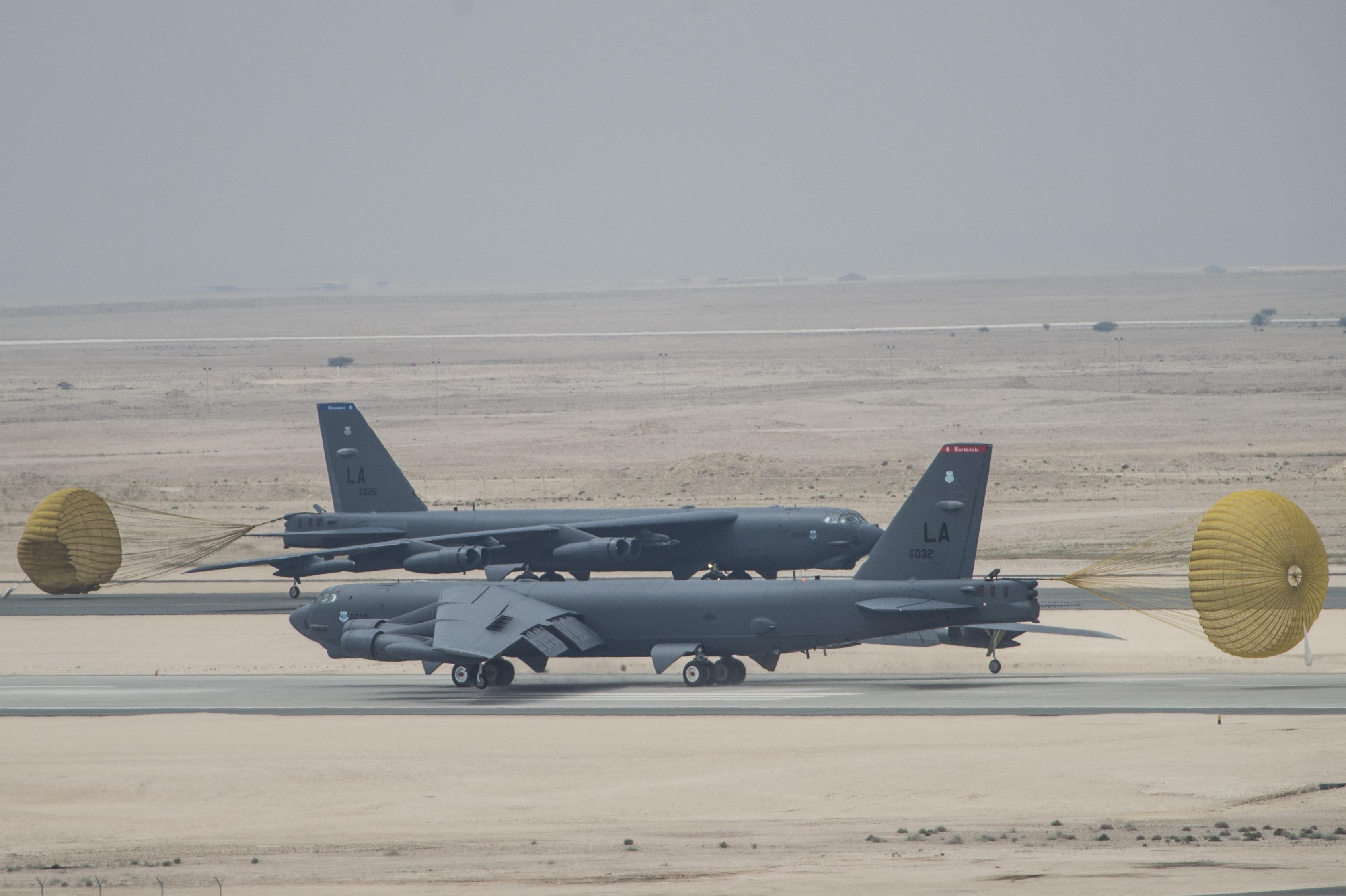A B-52 Stratofortress aircraft from Barksdale AFB, La., arrived at Al Udeid AB, Qatar, April 9, 2016, in support of Operation Inherent Resolve. Air Force photo by SSgt. Corey Hook.
KABUL—Loosened rules of engagement, giving the US military broader authorities to strike both the Taliban and ISIS, along with a bigger bomber presence has translated to a much higher tally of American airstrikes in Afghanistan.
In April, US aircraft conducted 460 total airstrikes in Afghanistan, the highest tally since August 2012. The number was more than double the previous month, and came as the White House gave the military the ability to more quickly respond to support Afghan National Army troops in contact with the Taliban or ISIS, said Maj. Gen. James Hecker, the commander of NATO Air Command-Afghanistan and the 9th Air and Space Expeditionary Task Force-Afghanistan, during a recent interview with Air Force Magazine in Kabul.
The rules of engagement change meant that “if the Afghan National Army or Special Forces are basically under attack, we could act in their defense. … We could basically engage on their behalf,” Hecker said. “That expansion of our authorities led us to be a little more lethal, be able to use more strikes.”
The White House and US Forces-Afghanistan Commander Army Gen. John Nicholson also have called for the “annihilation” of ISIS-Khorasan in 2017. In this vein, Nicholson approved the April 13 strike on an ISIS tunnel complex using the Air Force’s GBU-43/B “Mother of All Bombs.”
There has been a “pretty good movement” against ISIS-K in Afghanistan, using aircraft and special forces. There’s been a “large emphasis on that these past couple months, and that’s led to a fair amount of airstrikes as well.”
However, the recent use of a massive truck bomb to kill scores of civilians in downtown Kabul shows that much work is to be done in the anti-terrorism fight in Afghanistan.
To further carry the load in the increased air war against ISIS and the Taliban, US Forces–Afghanistan has been able to take advantage of a formidable asset—the B-52.
A Stratofortress, deployed to another base in Southwest Asia, typically flies to Afghanistan “on average once a week,” sometimes carrying more than 30 bombs. Because of the long “over the horizon” mission, the B-52 loiters for about four to six hours with tanker support.
“In essence, if we had 30 targets, we could hit 30 targets,” Hecker said. “It gives us a fairly large capability.”
The B-52 flights complement a high operations tempo for remotely piloted aircraft over Afghanistan, and fighters based at Bagram Air Field. Currently, F-16s from the 555th Expeditionary Squadron, deployed from Aviano AB, Italy, are the main unit flying manned combat missions in Afghanistan. The requirement for air support is likely to grow as fighting season continues in the country, and hundreds of marines are deploying to Helmand Province.
The requirement for tanking has been a limiting factor inside Afghanistan. The Air Force no longer bases KC-135s or KC-10s in country, and instead relies on the tankers flying “up the boulevard” from bases in Southwest Asia to Afghanistan. The long flight, and sometimes weather restrictions, have caused US commanders in Afghanistan and in the Combined Air Operations Center in Southwest Asia to change their plans.
Earlier this spring, fog covering the tanker’s operating base meant they could not takeoff and fly to Afghanistan for support, which meant fighters in Afghanistan “lost a fair amount of sorties,” Hecker said. Eventually, the Air Force moved some tankers to Kandahar Airfield in Afghanistan to provide more support until the weather cleared.
Now the Air Force is “looking at options” to better prepare for limitations like this, including rebasing tankers in Afghanistan.

